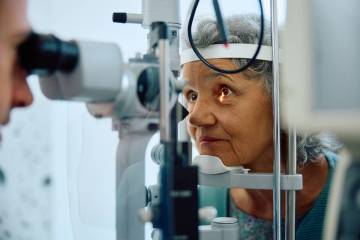Tips to relieve wrist pain caused by swing sports
Question: I’ve been trying to brush up my golf game by regularly hitting the driving range and playing more often. But lately, I’ve noticed a pretty painful twinge in my right wrist during my swing. What might be going on?
Answer: Summer is a great time to get out on the course and take your golf game to the next level. Wrist injuries from golf — as with other swing sports like pickleball, tennis and baseball — tend to be from overuse and repeated motion, not from an acute injury such as a fall.
These injuries affect the tendons in your hands, wrists, elbows and shoulders. Tendons are the tough cords that connect muscles to bones. Referred to as tendinopathy, tendon injuries are marked by the tendon becoming inflamed, thickening, snapping or moving out of its normal groove, and causing pain. Some common swing-sport injuries are:
■ Golfer’s elbow: Golfer’s elbow causes pain where the tendons of the forearm muscles attach to the bony bump on the inside of the elbow. The pain might spread into the forearm and wrist. Although not limited to golfers, it’s often caused by repeated wrist flexion and pronation, or turning your palm down.
■ Tennis elbow: Tennis elbow pain is also caused by overuse of the muscles and tendons in the elbow, but it’s on the outside or lateral aspect of the elbow. It’s often linked to repeated extension and supination, or turning your palm up. Wrist extension is necessary when swinging a racket, but it can occur in any swinging sport.
■ Calcific tendinopathy: This is caused by calcium deposits in a tendon. What causes calcium deposits isn’t exactly clear, but research shows there may be a genetic component. This condition causes severe pain when moving the joint and is most common in the shoulder/rotator cuff tendons.
■ Rotator cuff injury: The rotator cuff is a group of muscles and tendons that surround the shoulder joint. Rotator cuff injuries are caused most often by wear and tear of the tendon tissue over time from repeated overhead motions or heavy lifting. It’s common in people who play sports such as baseball or tennis. A rotator cuff injury can cause a dull ache in the shoulder that worsens at night or when you reach overhead or away from the body.
Tendon injuries are seen most often in older adults because their tendons are less supple. Women who experience perimenopause or menopause tend to have lower estrogen levels, which play a role in keeping tendons flexible.
Treating tendon injuries
With a tendon tear or calcific tendonitis, inflammation plays a role, and controlling it will help control discomfort. Ice and taking over-the-counter pain medications are the first line of treatment. With chronic overuse tendinopathy, heat and topical pain relievers may provide pain control. If these approaches don’t relieve the pain, other treatments include:
■ Bracing or splinting to immobilize the wrist, allowing the tendon to rest and heal.
■ Injecting a steroid into the sheath around the tendon.
■ Dry needling by a physical therapist or other qualified person.
■ Surgery to debride or remove damaged tissue an irritated, unhealthy tendon or to repair a tendon that has torn and pulled away from the bone.
Staying hydrated, getting enough sleep and eating adequate amounts of protein can help your body recover and even heal micro-injuries as they occur.
Playing it safe
Wrist injuries can even occur the first time you play. That’s because you’re not accustomed to the force of the swing and the load on tendons and tissues as that force travels through the club, racket or bat. So whether you’re just picking up a swing sport or increasing the amount you play, it’s important to:
■ Ensure your equipment fits properly. A club, racket or bat should be the correct length and weight for your body.
■ Learn the correct swing form and technique.
■ Warm up with stretches and practice swings before playing.
■ Gradually increase the frequency and length of time you play.
■ Consider exercises that strengthen muscles in the chest, shoulders, upper back, arms and wrists.
Unlike schoolchildren, adults don’t get recess, so we need to find ways to play. That includes returning to a sport, playing more often or picking up a new sport. For overall physical health and well-being, it’s key for adults to keep moving.
Dr. Alecia Gende specializes in sports and emergency medicine with the Mayo Clinic Health System in Wisconsin.



















